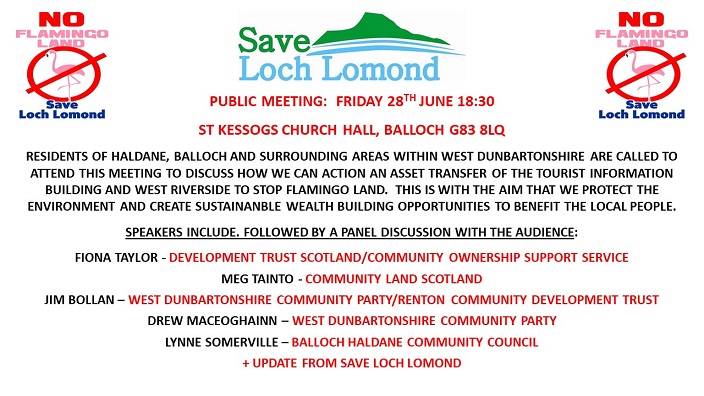 In a positive move, the local community in Balloch, the site of the proposed Flamingo Land development, have initiated a process to set up a local community development trust which would have the potential to take over some of the land in the village currently owned by Scottish Enterprise (SE) and the Loch Lomond and Trossachs National Park Authority (LLTNPA).
In a positive move, the local community in Balloch, the site of the proposed Flamingo Land development, have initiated a process to set up a local community development trust which would have the potential to take over some of the land in the village currently owned by Scottish Enterprise (SE) and the Loch Lomond and Trossachs National Park Authority (LLTNPA).
If Scotland had real National Parks, where public land was managed in the public interest, this would not be necessary. This being the UK/Scotland, SE, acting in concert with the LLTNPA (see here), decided to turn all the undeveloped public land on the west side of the River Leven into a holiday resort and then sell it to Flamingo Land on the cheap (see here) provided they got planning permission. Given this and the way the LLTNPA have been manipulating the planning system at Balloch (see here), a community buyout has has always been the most likely means of preventing the Flamingo Land from going ahead. Where public authorities fail, the powers afforded to local communities by the community empowerment legislation become very important.
Both SE and LLTNPA senior management have always been aware of this potential threat to their plans. It explains SE’s Exclusivity Agreement (EA) with Flamingo Land, designed to prevent the local community in Balloch from exercising any of the rights conferred by the community empowerment legislation (see here). It also explains the LLTNPA’s long history of failure to involve and engage the local community in its plans, culminating in the charrette charade (see here), designed to make it appear the National Park Authority was listening while changing nothing (here). Until recently, however, there was no organisation to represent community views and push for an alternative. There was no real threat to those vested and undemocratic interests. The creation of a Community Development Trust, or similar, would change all that. This post takes a brief look at the opportunities available to the local community given SE’s EA with Flamingo Land.
The land covered by SE’s Exclusivity Agreement with Flamingo Land
SE’s EA with Flamingo Land appears to give the developer the right to buy the land conditional on full planning permission being granted. Since it is proposed the development would be phased, with separate “full” planning applications being submitted for different parts if planning permission in principle is granted, it appears the land sell-off would also be phased.
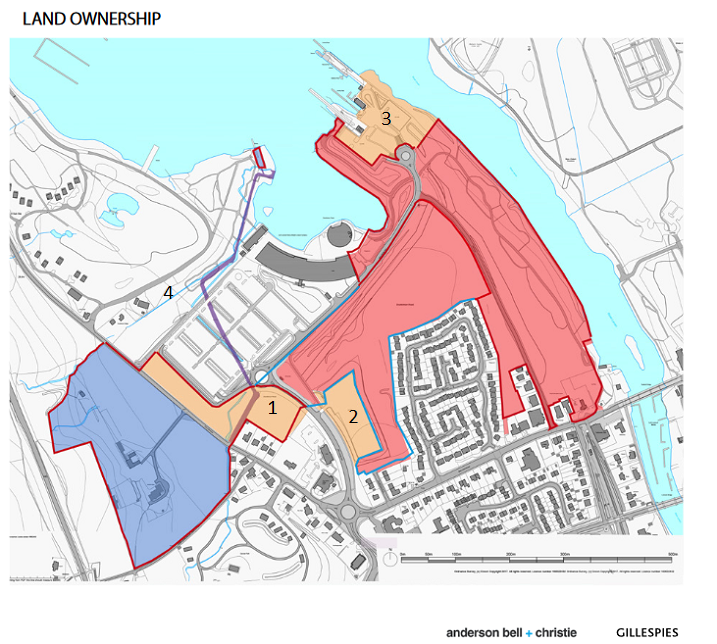
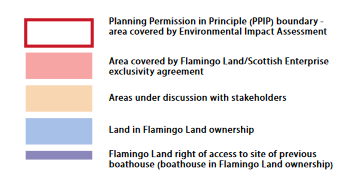
This map shows that the land included in the application for planning permission in principle is not the same as that covered by the EA – unless SE has subsequently secretly extended it – or the land owned by SE. This means that even if the EA does effectively preclude the local community from taking over some of the land owned by SE in Balloch unless planning permission is refused, there is other land where the local community could register an interest and possibly buy.
More specifically, the part of Drumkinnon Woods that lies between Ben Lomond Way and the Old Luss Rd (marked 1 on the map), which Flamingo Land wanted to develop as a service area (see here) but withdrew from their Mark 3 application (see here), is not included in the EA. It should therefore be possible for the local community to take over this land and, if successful, that would offer some safeguards against Flamingo Land trying to develop it in future were they granted planning permission in principle for the entire site.
There is further potential for the local community to register an interest or take-over land owned by Scottish Enterprise which is outwith the area included in the Flamingo Land planning application. While some of this potential is limited by the existence of long-term leases to private interests (150 years to Lomond Shores), there are still opportunities in the short-term. That is well illustrated by this excellent map showing the LLTNPA’s interests in land at Balloch:

The land leased by the LLTNPA from SE is for a much shorter time period than that leased by Loch Lomond Shores. That creates further risks for the local community and to the wider public interest in that SE could decide to sell this land to Flamingo Land when its leases with the LLTNPA expire. It also creates opportunities for the local community to pre-empt this by registering their interest now.
The most immediate risk is at the former National Park Gateway Centre where the LLTNPA Board endorsed staff proposals to try and hand the property back to Scottish Enterprise after its sub-lease collapsed (see here). There is every reason therefore for the local community to get organised and act quickly.
The local community, however, should also consider whether to register an interest in the land owned by the LLTNPA at the pierhead. The land in this area, both that owned by the LLTNPA and that it leased from SE, is shaded brown on the top map meaning it is “under discussion with stakeholders“. The LLTNPA have kept those discussions with SE secret – they have never been publicly reported to the board – even though their land is crucial for enabling Flamingo Land’s construction of a hotel and leisure complex at the pierhead to go ahead. The power of the local community to influence the proposed development if they owned this piece of land would be immense and for both SE and Flamingo Land to treat them as “stakeholders”. That might enable more sensible plans for the pierhead to develop.
How exclusive is SE’s EA with Flamingo Land?
The Green Party obtained a copy of the EA in June 2023 in response to an information request (the Balloch and Haldane Community Council have copies). While SE’s information response clarified that the former EA had been converted into “conditional missives” – i.e a further step to enable them to dispose of the land quickly once full planning permission is granted – this version of the EA was so heavily redacted that it was almost impossible to understand what it said or ascertain whether it might be open to legal challenge. Unfortunately, recently the Information Commissioner decided (see here) that SE’s extensive redactions were justified on commercial grounds: that may be legally correct though it says something about how Scottish Enterprise is constituted that its commercial remit trumps the public interest.
Tellingly, the least redacted part of the EA falls under the heading “community interests”. While the agreement is very careful to state that the community had not registered any interested in the land by the time the agreement was concluded and is equally careful to describe the land as not being abandoned or derelict – which could create a right to buy – it suggests that legally some doors are still open under Part 5 of the Land Reform (Scotland) Act 2016:
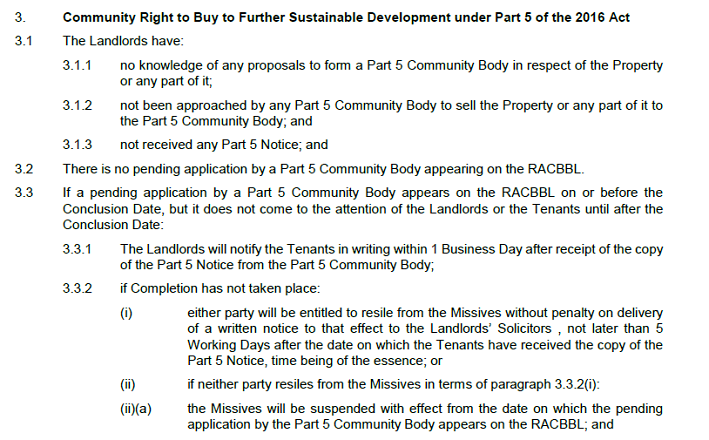
Why allow either party to resile from the conditional missives if the local community did not have a right to buy some or all the land “to further sustainable development”? It seems to me it would be worth the local community getting expert advice on this and its very positive that two of the speakers at the meeting today, from Community Land Scotland and the Community Ownership Support Service, would appear to have that sort of expertise.
Moreover, given of the four statutory aims of the LLTNPA is sustainable development and that so far, for example, they have not required Flamingo Land to assess the overall impact of the development on carbon emissions, it seems to me a bid from the local community that put sustainability at its heart would have a reasonable chance of success.
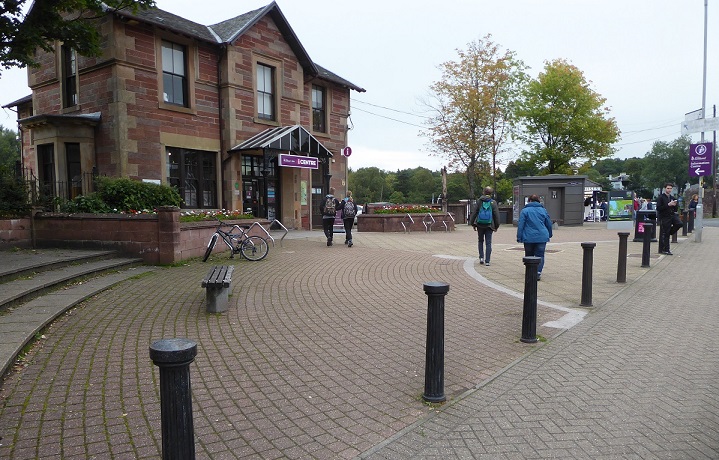
The future of the former Visit Scotland centre, which is on the land covered by the EA, should be seen as a test case of public and community interests, with its future being key to sustainable development in the National Park.
It is absolutely shocking that in a village the LLTNPA usually describes as the gateway to the National Park, not only have they shut down the former Gateway Centre, which they appear prepared to hand back to SE to give to Flamingo Land on a plate, but Visit Scotland has now done the same. Unlike other places in western Europe, where in my experience there are tourism advice places everywhere, in Britain all that public infrastructure has been closed down as a result of cuts. In the National Park those paid jobs have now been replaced by the volunteers which the LLTNPA use to “meet and greet” visitors.
The scandal here is that the LLTNPA, which has a statutory duty to promote both sustainable development and public enjoyment, has been party to the decisions to close down all the public infrastructure that used to support this. Instead of providing a public service its mission has been to outsource the “visitor experience” to commercial organisations like Flamingo Land. I have extensively documented the disastrous consequences of this on parkswatch for the last ten years, with a great deal of help from people living in the National Park. I cannot see the whole disastrous process ending – our politicians and board members are either part of the problem or incapable of intervening to halt what is going on – until the general public get behind and support the efforts of local communities to challenge directly those who are abusing their powers. That is why the meeting tonight is so significant, it could mark a turning point both in the ongoing Flamingo Land saga but also more widely across the National Park.

Excellent article. However, this recent story in Herald, as regards the sale of the Cashel woods, highlights the problem even with a supposed ‘community’ buy-out – albeit this is a different type of ‘community’:-
https://www.bbc.co.uk/news/articles/cx82e8rdwxwo
This land was bought with Millennium Forest Trust for Scotland funding, and now it’s being sold on the open market.
The owners of this woodland is the Cashel Forest Trust Company. This Trust took ownership from The Royal Scottish Forestry Society in 2017. The membership of the RSFS was not consulted about the sale and were only informed the day before the estate went on the market last week. There is therefore no ‘community’ involved (of any description) in the sale.1
I am not sure who the beneficiaries from the proceeds of the sale are …membership has been kept in the dark about this and everything else.
In to Community ownership look Good. look in for funding.
https://goldcrestlfg.com/properties/cashel-estate/
Further information on the sale of Cashel.
Nick, what is the motivation behind SE and LLTNPA’s collusion with Flamingoland?
What do they stand to gain from all this?
I think this can only be understood through the way the whole of government in Scotland appears wedded to neoliberal philosophy which fundamentally says public sector bad, private sector good. It has resulted in the sell off of public assets across Scotland and now prevents any consideration of what land should be for.